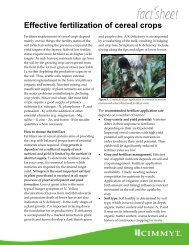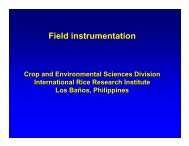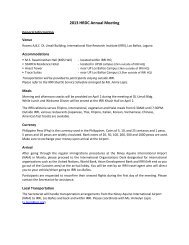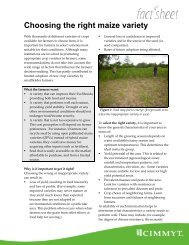Water management in irrigated rice - Rice Knowledge Bank ...
Water management in irrigated rice - Rice Knowledge Bank ...
Water management in irrigated rice - Rice Knowledge Bank ...
- No tags were found...
You also want an ePaper? Increase the reach of your titles
YUMPU automatically turns print PDFs into web optimized ePapers that Google loves.
The plant-soil-water system22.1 <strong>Water</strong> movement <strong>in</strong> the soil-plantatmospherecont<strong>in</strong>uum<strong>Rice</strong> plants take up water from the soil and transportit upward through the roots and stems and releaseit through the leaves and stems as vapor <strong>in</strong> the atmosphere(called transpiration). The movement ofwater through the plant is driven by differences <strong>in</strong>water potential: water flows from a high potentialto a low potential (imag<strong>in</strong>e free water flow over aslop<strong>in</strong>g surface: water flows from the top, with ahigh potential, to the bottom, with a low potential).Different units express water potential (Table 2.1)and, unfortunately, different authors report differentunits. In this report, we usually use the termPascal (P).In the soil-plant-atmosphere cont<strong>in</strong>uum, thewater flows from the soil, with a relatively highpotential, through the plant to the atmosphere justoutside the leaves, which has a relatively low potential.Potentials <strong>in</strong> the soil-plant-atmosphere areusually negative and we also use the term “tension,”which has the opposite value. For example, a tensionof +10 kPa is the equivalent of a potential of–10 kPa. The term tension is <strong>in</strong>tuitively easier tounderstand: a high tension suggests a high “pull<strong>in</strong>gforce.” Thus, water flows from a low tension <strong>in</strong>the soil (low pull<strong>in</strong>g force) to a high tension <strong>in</strong> theatmosphere (high pull<strong>in</strong>g force). The water tension<strong>in</strong> the atmosphere outside the leaves is determ<strong>in</strong>edby climatic factors: relative humidity, w<strong>in</strong>d speed,temperature, and solar radiation. This atmospherictension translates <strong>in</strong>to the “evaporative demand”of the atmosphere, which determ<strong>in</strong>es potentialtranspiration rates. The water tension <strong>in</strong> the soilis determ<strong>in</strong>ed by the amount of water <strong>in</strong> the soiland by soil physical properties such as texture andbulk density. The speed with which water movesthrough the plant is determ<strong>in</strong>ed by the difference <strong>in</strong>water tension between the soil and the atmosphere(the higher the differences, the faster the water willflow) and by the resistance to water flow <strong>in</strong> the plant(Ehlers and Goss 2003). First, soil water needs toovercome a physical resistance (the epidermis)to enter the roots. Then it flows through cells orthrough spaces between cells <strong>in</strong>to so-called xylemor vascular bundles that will transport it upward.The water flows easier and faster <strong>in</strong> wide bundlesTable 2.1. Units to express water potential and some correspond<strong>in</strong>g values. pF is calculated as 10 log(–H), where H is waterheight <strong>in</strong> cm.Unit nameCorrespond<strong>in</strong>g value<strong>Water</strong> height (cm) 0 −10 −100 −1,000 −15,850pF (–) –∞ 1 2 3 4.2Bar (bar) 0 0.01 0.1 1 15.85Pascal (Pa) 0 1,000 10,000 100,000 1,585,000Kilo Pascal (kPa) 0 1 10 100 1,585Mega Pascal (MPa) 0 0.001 0.01 0.1 1.58511





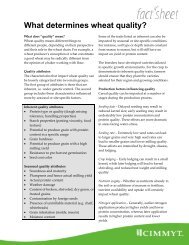

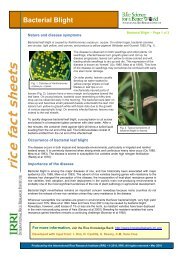

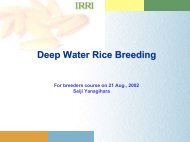
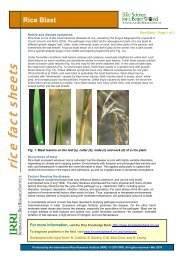
![International Standards' Organization â Rice Specification [ISO 7301]](https://img.yumpu.com/36696862/1/190x245/international-standards-organization-a-rice-specification-iso-7301.jpg?quality=85)

